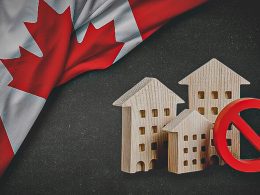India is witnessing rapid urbanization, aging infrastructure, and rising seismic concerns. These issues are pushing builders, engineers, and government bodies to rethink structural safety. Over time, beams, columns, and slabs lose their load-bearing capacity due to factors like corrosion, overloading, and design flaws. Fortunately, a modern solution exists to address these issues effectively. Carbon Wrapping has emerged as a reliable method for strengthening various structural elements without major reconstruction.
Growing Need for Structural Rehabilitation in India
In many parts of India, especially Tier-1 and Tier-2 cities, buildings over 30 years old show visible distress. Cracks, sagging, and exposed reinforcement indicate loss of strength. Public buildings, bridges, and even private homes require attention. Yet demolishing and rebuilding is not always feasible due to cost, time, and displacement issues. Therefore, Carbon Wrapping presents a powerful alternative—strengthening structures in place without disrupting their usability.
What is Carbon Wrapping?
Carbon wrapping involves applying carbon fiber-reinforced polymers (CFRP) to structural components. These materials are bonded using high-performance epoxy resins. Once applied, they enhance the tensile strength, stiffness, and ductility of the structural member. Unlike traditional materials, CFRP is lightweight, corrosion-resistant, and easy to apply. Carbon Wrapping can be used on a variety of components such as slabs, beams, columns, and even walls, depending on the specific needs of the structure.
Applications Across Indian Infrastructure
This technique is used widely across several sectors. In government buildings, it helps extend the life of aged structures. In private homes, it reinforces weak slabs and beams without reducing space. Industrial plants use it to handle increased machinery loads. Hospitals and schools are also turning to Carbon Wrapping to comply with safety norms without affecting operations. Its flexible nature makes it applicable across different architectural styles found in India.
Key Structural Elements That Benefit from Wrapping
Many parts of a building can be improved using this method:
-
Columns: Enhanced axial load capacity and seismic resistance.
-
Beams: Increased bending strength and crack control.
-
Slabs: Improved resistance to flexural and punching shear forces.
-
Walls: Enhanced ability to withstand lateral loads.
Each element is analyzed and treated according to its load requirements and environmental exposure. Engineers develop customized solutions to ensure the Carbon Wrapping process provides maximum efficiency.
Why Carbon Wrapping is Suited for Indian Conditions
India’s diverse climate—ranging from coastal humidity to dry heat and intense monsoons—demands materials that can withstand varied challenges. Carbon fibers are corrosion-resistant and don’t degrade easily, even in salty coastal air. In seismic zones like Uttarakhand and Gujarat, Carbon Wrapping provides added ductility, allowing buildings to flex rather than fail during earthquakes. This makes the method especially valuable in Indian geographies with a mix of environmental and structural stresses.
The Wrapping Process: A Detailed Overview
A successful application requires a systematic approach:
-
Condition Assessment: Engineers inspect and assess structural damage or deficiencies.
-
Design Phase: A tailored design specifies fiber orientation, layer thickness, and surface coverage.
-
Surface Preparation: Concrete is cleaned, roughened, and primed for strong adhesion.
-
Fiber Installation: CFRP sheets are applied manually, following safety and alignment protocols.
-
Curing: Proper curing allows the bonding agent to achieve full strength.
Each step of the Carbon Wrapping process must be supervised by experienced professionals to ensure quality and long-term performance.
Benefits That Attract Indian Builders and Engineers
Indian construction professionals are increasingly adopting this method due to several practical benefits:
-
Minimal Downtime: Structures can remain occupied during repairs.
-
Space Efficiency: No need to increase structural dimensions.
-
Speed: Faster execution compared to conventional retrofitting.
-
Durability: Offers excellent long-term performance with little maintenance.
Given these advantages, Carbon Wrapping has become an ideal solution for structures needing quick, non-invasive reinforcement.
Environmental and Cost Considerations
Sustainability and affordability are key concerns in India. Compared to demolition and reconstruction, wrapping significantly reduces carbon emissions and material waste. Furthermore, the use of lighter materials lowers transportation and labor costs. Although initial investment may appear high, the long-term benefits outweigh the expense. When done properly, Carbon Wrapping can extend a structure’s life by decades, reducing the need for repeated repairs and keeping long-term costs manageable.
Addressing Challenges and Ensuring Quality
Despite its benefits, the method isn’t free from challenges. Many contractors lack adequate training, leading to improper application. Some clients may not fully understand the value of the technique, choosing cheaper and less effective repairs instead. Additionally, design complexity can delay execution if not handled properly. However, with growing awareness and increased training opportunities, the Indian construction sector is becoming better equipped to adopt Carbon Wrapping successfully.
Regulatory Framework and Technical Guidelines in India
Indian engineers often rely on global standards for wrapping practices. However, national bodies like BIS and IRC are working to integrate FRP techniques into official codes. Government-funded projects now consider Carbon Wrapping as part of their approved repair toolkit. With standardized guidelines on the rise, more contractors and government agencies can implement this solution with greater confidence and consistency.
Real-World Success Stories from Indian Projects
Numerous Indian projects have successfully implemented this technique. In Delhi, government schools used carbon wrapping to meet earthquake-resistance criteria. In Mumbai, a high-rise building reinforced its aging columns to support additional floors. Meanwhile, a bridge in Assam used CFRP wrapping to repair flood-damaged beams without shutting down traffic. These case studies prove that Carbon Wrapping delivers long-term, real-world benefits in the Indian context.
The Role of Engineers in Wrapping Projects
Engineers play a critical role in the success of any reinforcement project. Their responsibilities include detailed assessment, design planning, supervision, and quality control. They must also educate clients about the process and its advantages. In India, many civil engineers now include Carbon Wrapping in their service portfolio. Their technical input ensures that the project delivers both strength and safety without compromising cost or schedule.
Training and Workforce Development in India
To ensure consistent quality, training is essential. Vocational institutes and private training centers have begun offering certification courses. These programs teach workers how to handle CFRP materials, use bonding resins, and execute designs accurately. With more skilled technicians in the field, Indian construction sites can ensure that Carbon Wrapping is applied correctly, safely, and efficiently across a wide range of building types.
How to Choose the Right Wrapping Partner
Choosing a skilled service provider is vital. Here are a few things to check:
-
Experience: Ask for past project reports and references.
-
Material Quality: Ensure that certified, tested CFRP is used.
-
Design Support: Select providers that offer engineering design as part of the service.
-
Safety Practices: Make sure that proper PPE and procedures are followed.
-
After-Sales Service: Good contractors offer post-installation inspections and support.
Selecting a reliable team ensures that Carbon Wrapping delivers the expected structural benefits without future complications.
Future Outlook of Structural Reinforcement in India
India’s infrastructure is expanding, but so is the aging of older buildings. Over the next decade, retrofitting and strengthening will become a major focus. Government incentives, stricter building codes, and public awareness will drive growth. Carbon Wrapping is positioned to lead this evolution. It offers a perfect blend of performance, adaptability, and sustainability, making it a critical tool in India’s construction future.
Smart, Safe, and Sustainable Reinforcement
In today’s construction world, safety and sustainability can no longer be secondary. As India continues to grow vertically and horizontally, old structures must meet modern standards. Carbon Wrapping provides a smart way to reinforce without starting from scratch. It’s cost-effective, fast, reliable, and suited to Indian conditions.












